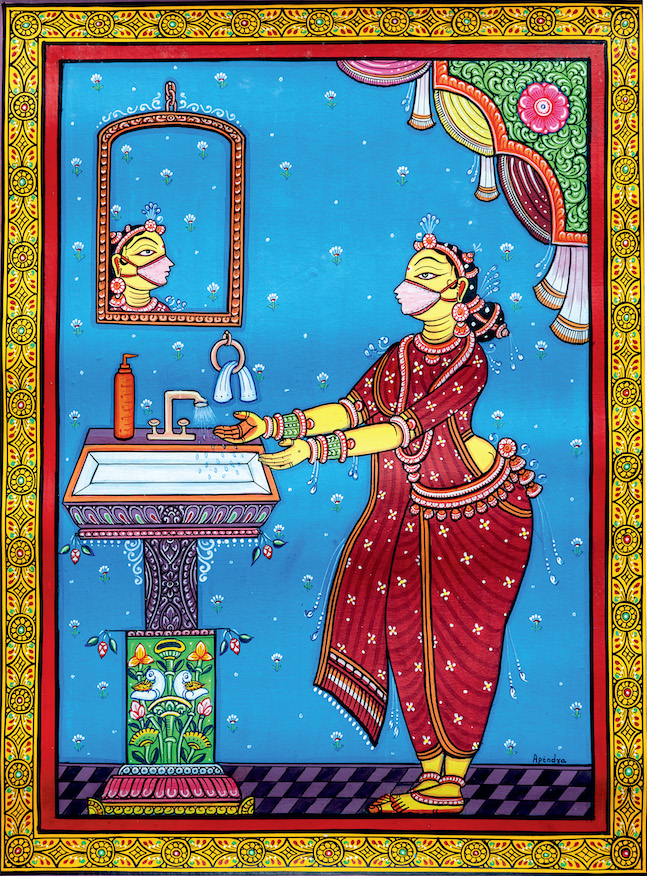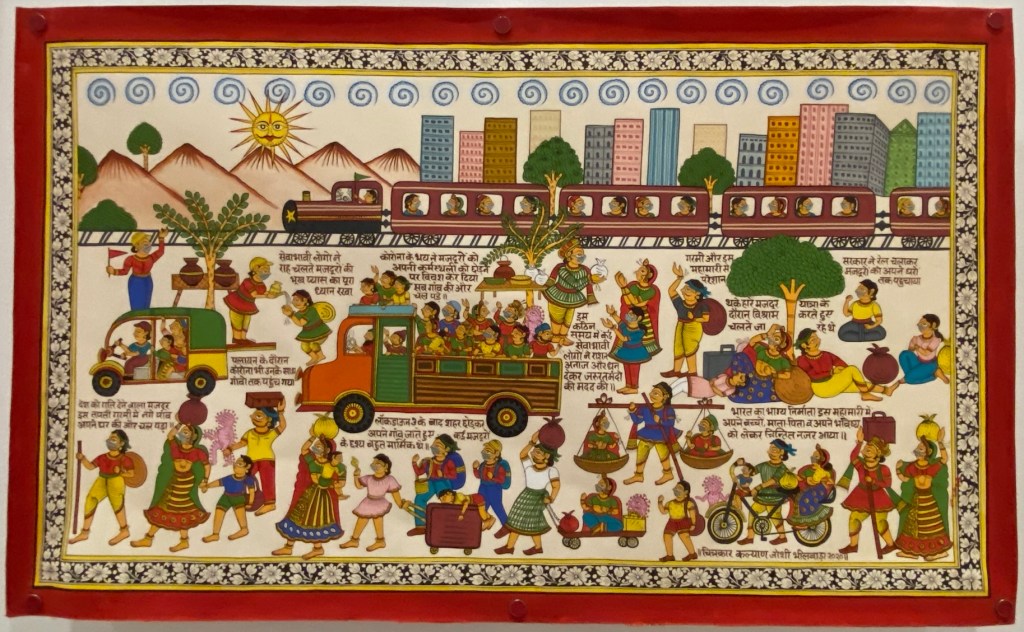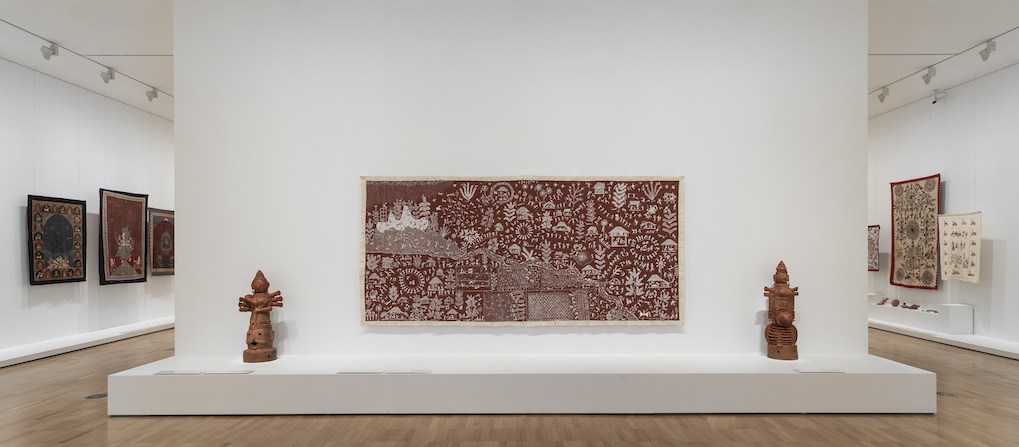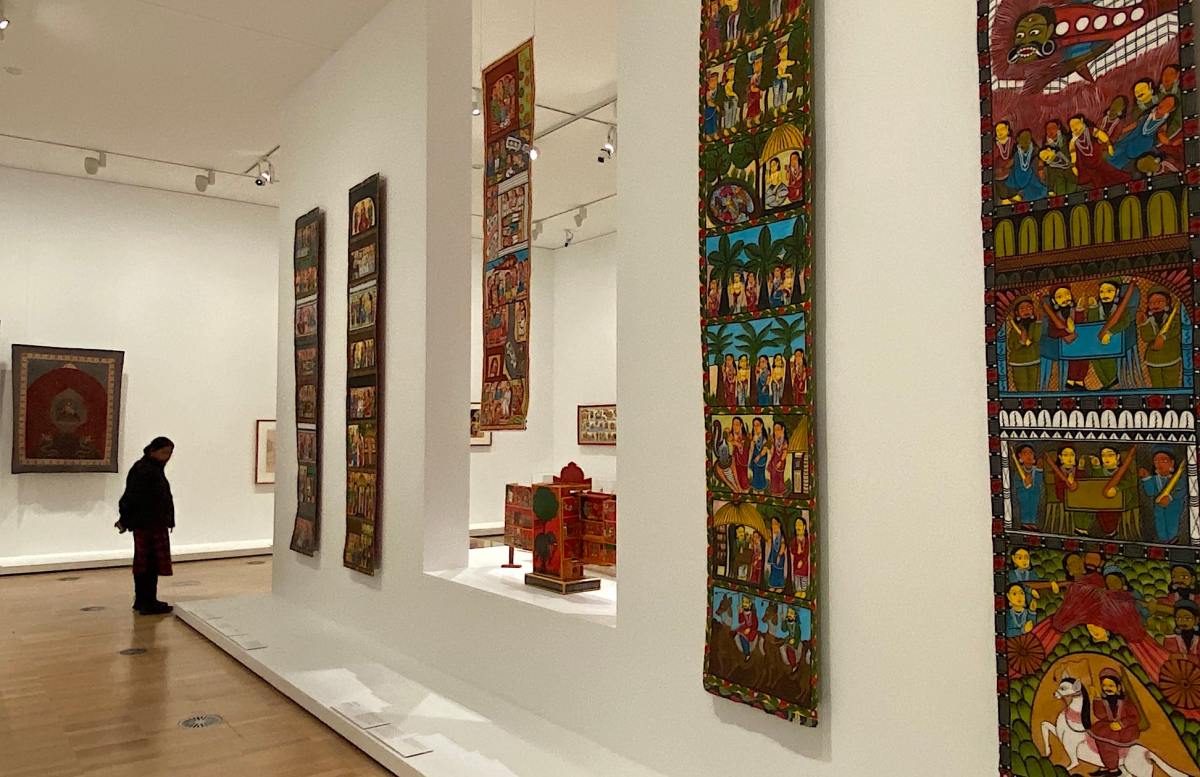Transforming Worlds: Change and Tradition in Contemporary India is drawn entirely from the NGV Collection. But it is not a case of dusting off and rolling out again familiar objects, rather the exhibition showcases more than 60 recent acquisitions that have never before been displayed – many that respond to living in COVID times.
Positioned within the inner cube gallery at NGV International, it can be accessed by first entering a collection hang of traditional South Asian and Southeast Asian artworks and artefacts.
By chance, I happened to view the exhibition the week that the ABC broke the story on questionable provenance practices (of largely Thai and Cambodian objects) with the former David Jones Art Gallery in Sydney in the 1970s. The NGV has assured me that it doesn’t have a history of acquisitions from the said gallery.
But this journey between past and present is a vivid reminder of how different museum collecting practice is today compared with yesteryear. Transforming Worlds also offers an interesting visual cue to how traditional visual languages are still very much alive in India, but are being adapted with a contemporary social inflection that is exciting and fresh.
If anything, the exhibition is testament that these distinct artistic styles – many with strong regional connections – are actually being strengthened, rather than dying out. Many of the works on show have been created in the last three years.
Transforming Worlds explores the ways in which artists and creatives are using traditional narrative styles to respond to India’s rapidly changing social environment, including changing gender dynamics, urbanisation, environmental degradation and the recent COVID pandemic. It demonstrates that traditionally narrative work is becoming increasingly politically engaged.
This is a superbly researched and collected show, with new works from distinct communities such as the Gond and Warli painters of central India; the Suthar, Jogi, Santal and Madhubani artists of northern India; and the Kalighat and Chitrakar painters of eastern India.
Highlights include artist Apindra Swain’s paintings Wash hands(2020), The coronoa woman (2020) and Stay home (2020), painted in response to the pandemic using traditional narrative styles (and clothing) as a community education tool promoting COVID-safe practices. Amidst the seriousness of the occasion, there is a slight tone of humour and almost street hack, riff feel.

Similarly, large-scale contemporary examples of patachitra (picture cloth) five metres in length and painted by emerging artist Sonia Chitrakar documents the introduction and spread of COVID-19 throughout India in COVID scroll 2020.
Patachitra are traditionally used in Odisha and West Bengal where a travelling performer would sing their stories as they were unrolled.
Kallyan Joshi also picks up on the COVID theme with Migration in the time of COVID (2020), using a Rajasthani phad tradition but more in a kind of comic strip style.
India’s first lockdown triggered one of the country’s largest migrations in recent times – city workers forced to return to their rural homelands. This phad depicts that desperate migration.

Phads were traditionally created on cloths and depicted narratives of local deities in temple performances. The Joshi family are long custodians of this style of storytelling.
Upon first entering the gallery, visitors are faced with an incredible example of contemporary Warli painting (one of central western India’s largest indigenous groups) by Rajesh Chitya Vangad. This style of painting traces back to the 10th century, and usually shows daily life or seasonal events rendered in rice paste by women.
Read: Exhibitions review: Sea and Sky by Mostyn Bramley-Moore and Look Out by John Smith
Vangad’s mural, Natural world of Warlis (2017), takes that traditional seasonal cue but uses it to explore very contemporary topics of urbanisation and environmental degradation (the ground colour is from cow dung). We have to remember that around a billion people live in India, a country where tradition cohabits with skyscrapers.

Overall, this exhibition is a real treasure and deserves a visit. It is a fascinating insight into how the custodians of cultural heritage – so embedded in regional Indian communities – have both an eye on the past and the present, finding new storytelling but using tradition to empower the future.
Transforming Worlds: Change and Tradition in Contemporary India is on display at NGV International until 28 August 2022.
Entry is free.





